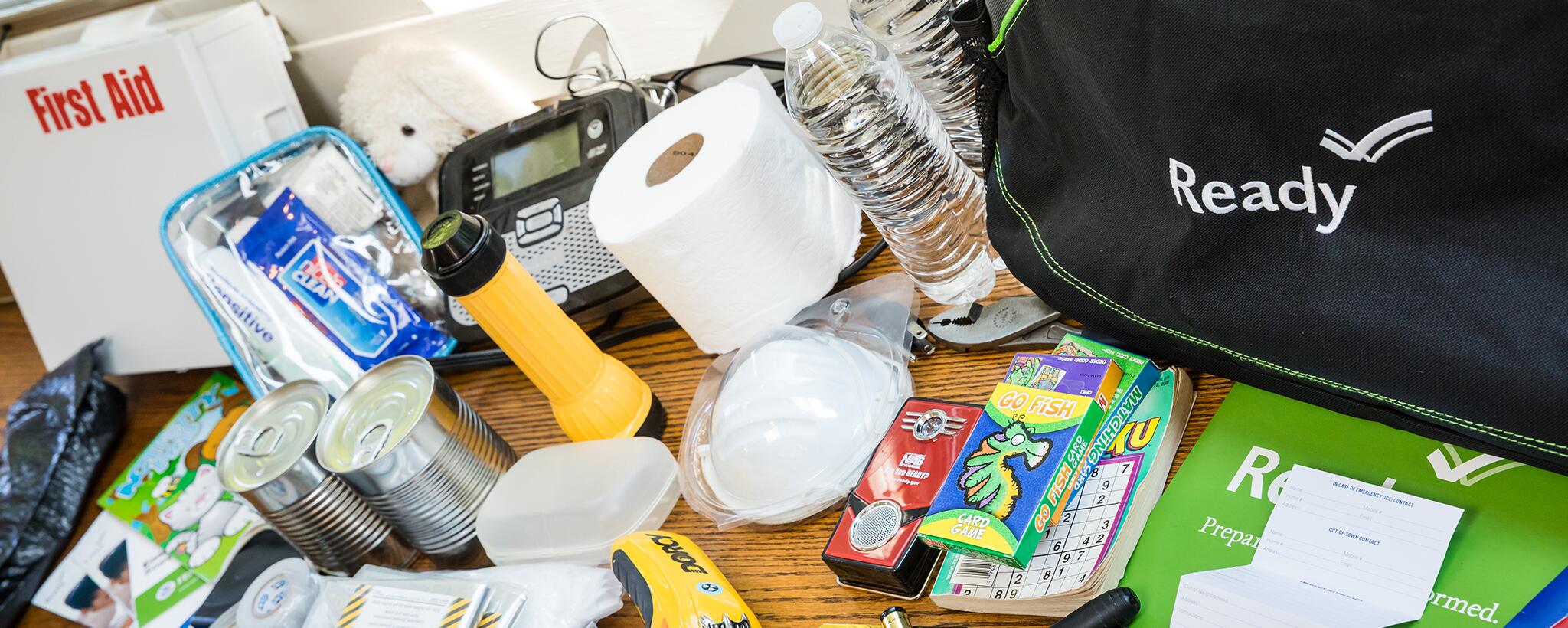
- By admin
- In Weather Safety
Plan Ahead For Disasters
After an emergency, you may need to survive on your own for several days. Being prepared means having your own food, water and other supplies to last for several days. A disaster supplies kit is a collection of basic items your household may need in the event of an emergency.
Recommended Supplies to Include in a Basic Kit:
- Water
- 1 gallon/person/day
- For drinking and sanitation
- Non-Perishable Food
- At least a 3 day supply/person
- Battery-powered radio and a NOAA Weather Radio with tone alert, and extra batteries for both
- Flashlight and extra batteries
- First Aid kit
- Whistle to signal for help
- Infant formula and diapers, if you have an infant
- Sanitation Materials
- Moist towelettes
- 5 gallon bucket
- Garbage bags w/ plastic ties
- Dust mask or cotton t-shirt, to help filter the air
- Plastic sheeting and duct tape to shelter-in-place
- Wrench or pliers to turn off utilities
- Can opener for food (if kit contains canned food)
Clothing and Bedding:
Consider your climate and pack accordingly
- A jacket or coat
- Long pants
- A long sleeve shirt
- Sturdy shoes
- A hat and gloves
- A sleeping bag or warm blanket for each person
Additional Supply Options
- Emergency reference materials such as a first aid book or a print out of the information
- Find materials at www.ready.gov
- Rain gear
- Mess kits, paper cups, plates, and plastic utensils
- Cash or traveler’s checks, change
- Paper towels
- Fire Extinguisher
- Tent
- Compass
- Matches in a waterproof container*
- Signal flare*
- Paper, pencil
- Personal hygiene items including feminine supplies
- Disinfectant*
- Household chlorine bleach*
- You can use bleach as a disinfectant (diluted nine parts water to one part bleach), or in an emergency, you can also use it to treat water. Use 16 drops of regular household liquid bleach per gallon of water. Do not use scented, color safe or bleaches with added cleaners.
- Medicine
dropper - Important Family Documents such as copies of insurance policies, identification and bank account records in a waterproof, portable container
Use this checklist from Ready.gov (PDF) to build your disaster supply kit.
Source: FEMA and Ready.gov
Don’t forget about Pets
Keep an Evac-Sack (or pillow case) and supplies handy for your pets. Make sure that everyone in the family knows where it is. This kit should be clearly labeled and easy to carry. Items to consider keeping in or near your pack include:
- Photocopies of medical records and a waterproof container with a two-week supply of any medicine your pet requires (Remember, food and medications need to be rotated out of your emergency kit—otherwise they may go bad or become useless.)
- Pet first-aid kit and guide book (ask your vet what to include, or visit the ASPCA Store to buy one online)
- 3-7 days-worth of canned (pop-top) or dry food (be sure to rotate every two months)
- Disposable litter trays (aluminum roasting pans are perfect)
- Litter or paper toweling
- Liquid dish soap and disinfectant
- Disposable garbage bags for clean-up
- Pet feeding dishes
- Extra collar or harness as well as an extra leash
- Bottled water, at least 7 days’ worth for each person and pet (store in a cool, dry place and replace every two months)
- A traveling bag, crate or sturdy carrier, ideally one for each pet
- Flashlight
- Blanket (for scooping up a fearful pet)
- Recent photos of your pets (in case you are separated and need to make “Lost” posters)
- Especially for cats: Pillowcase or Evac-Sack, toys, scoopable litter
- Especially for dogs: Extra leash, toys and chew toys, a week’s worth of cage liner
